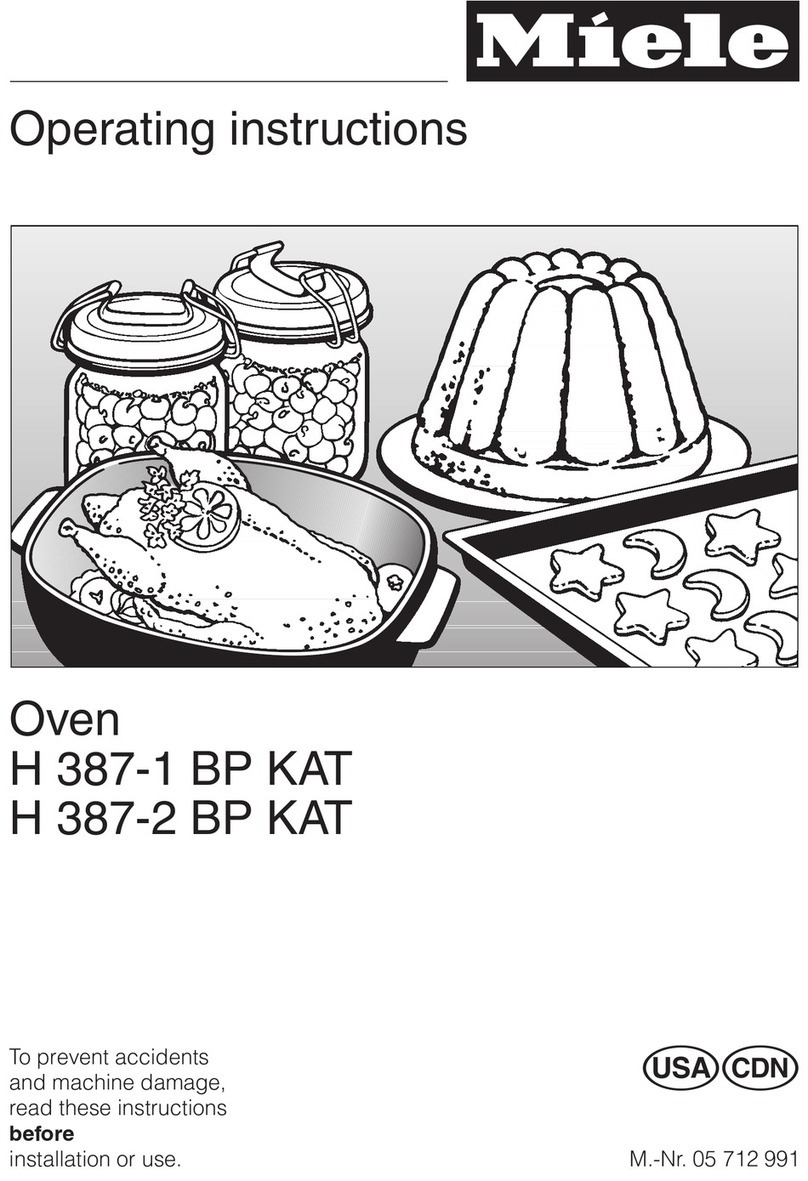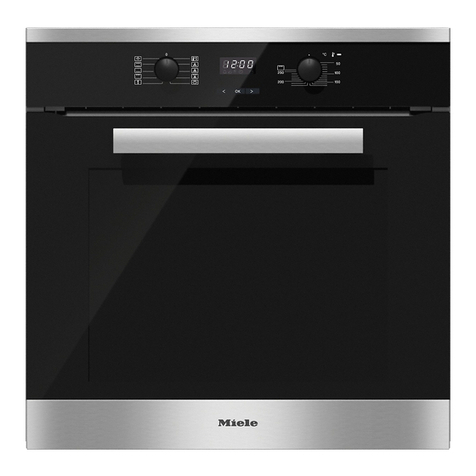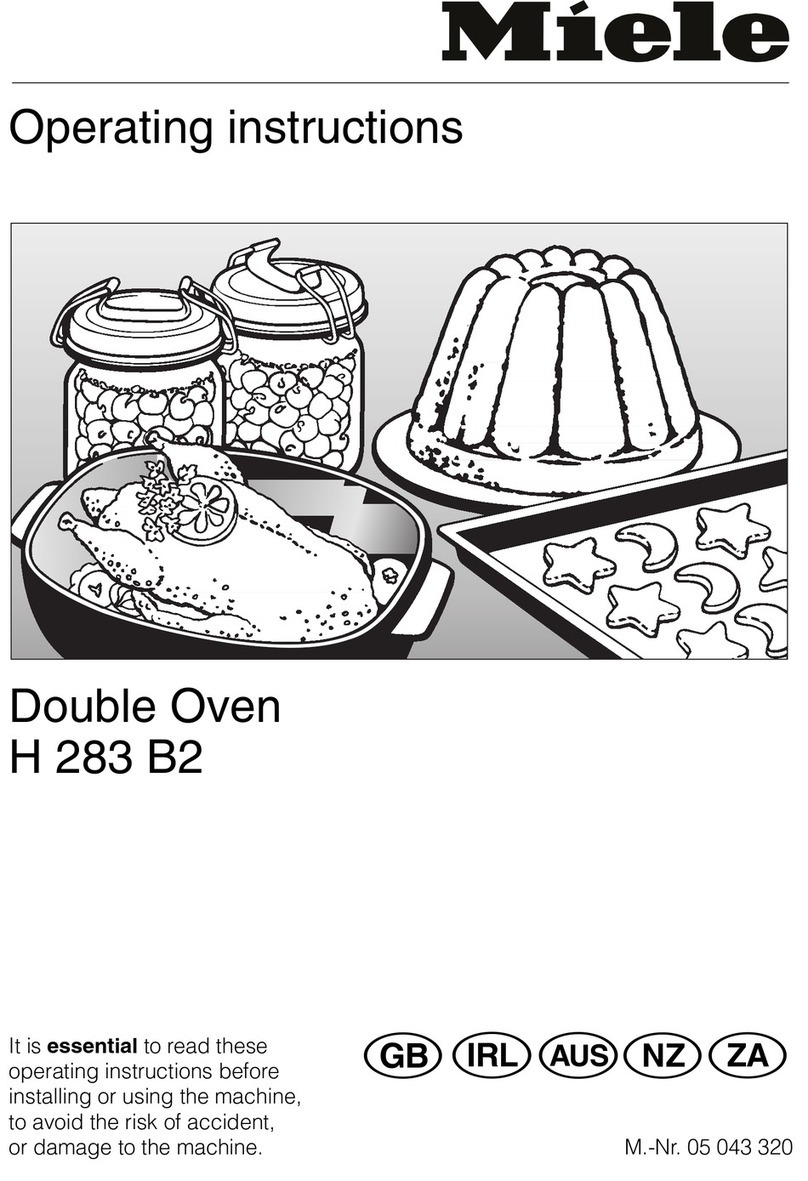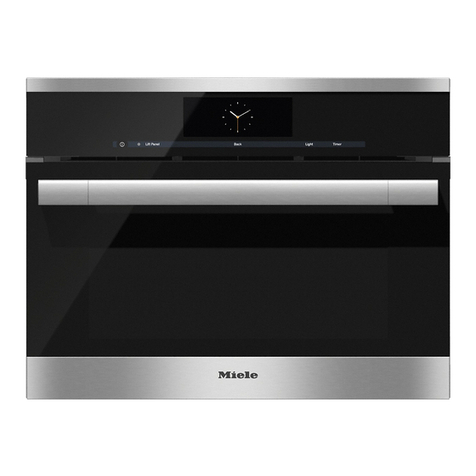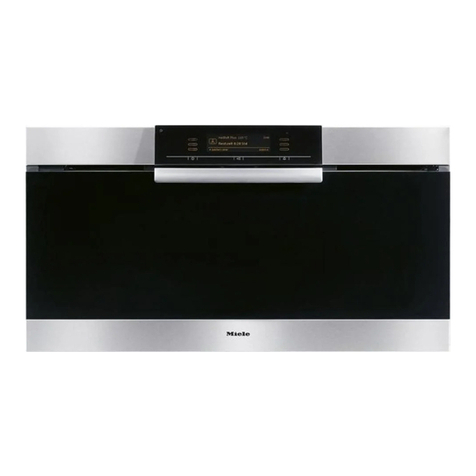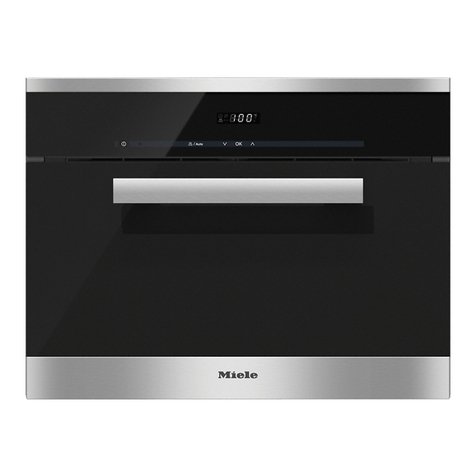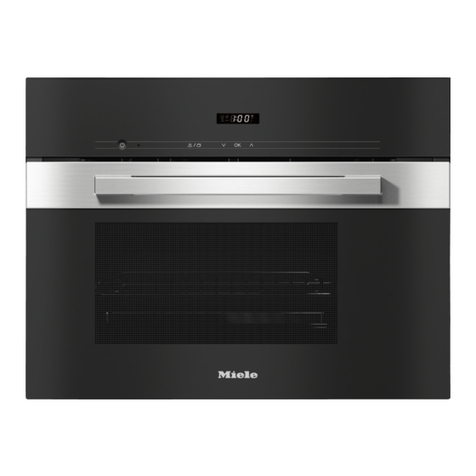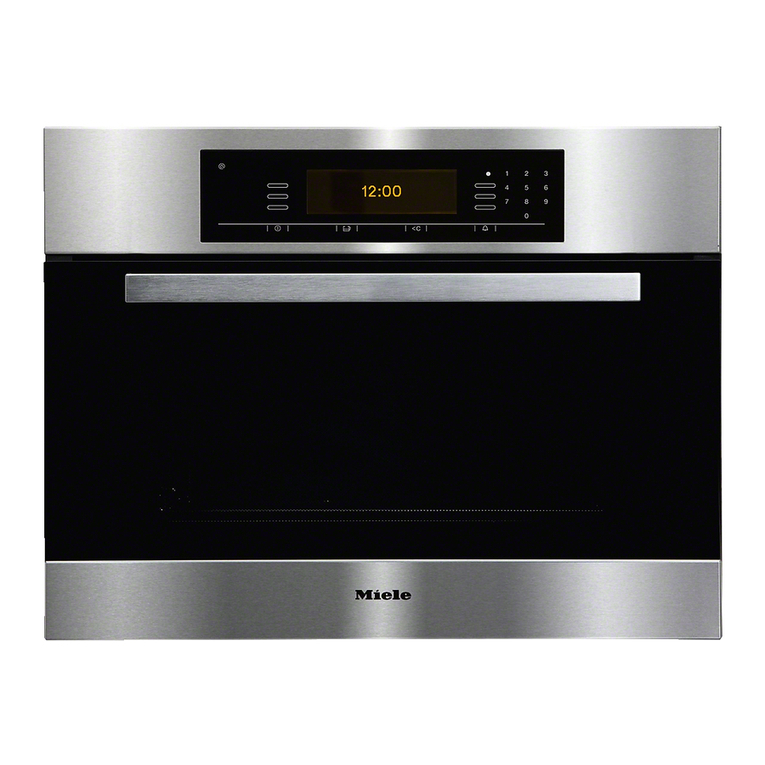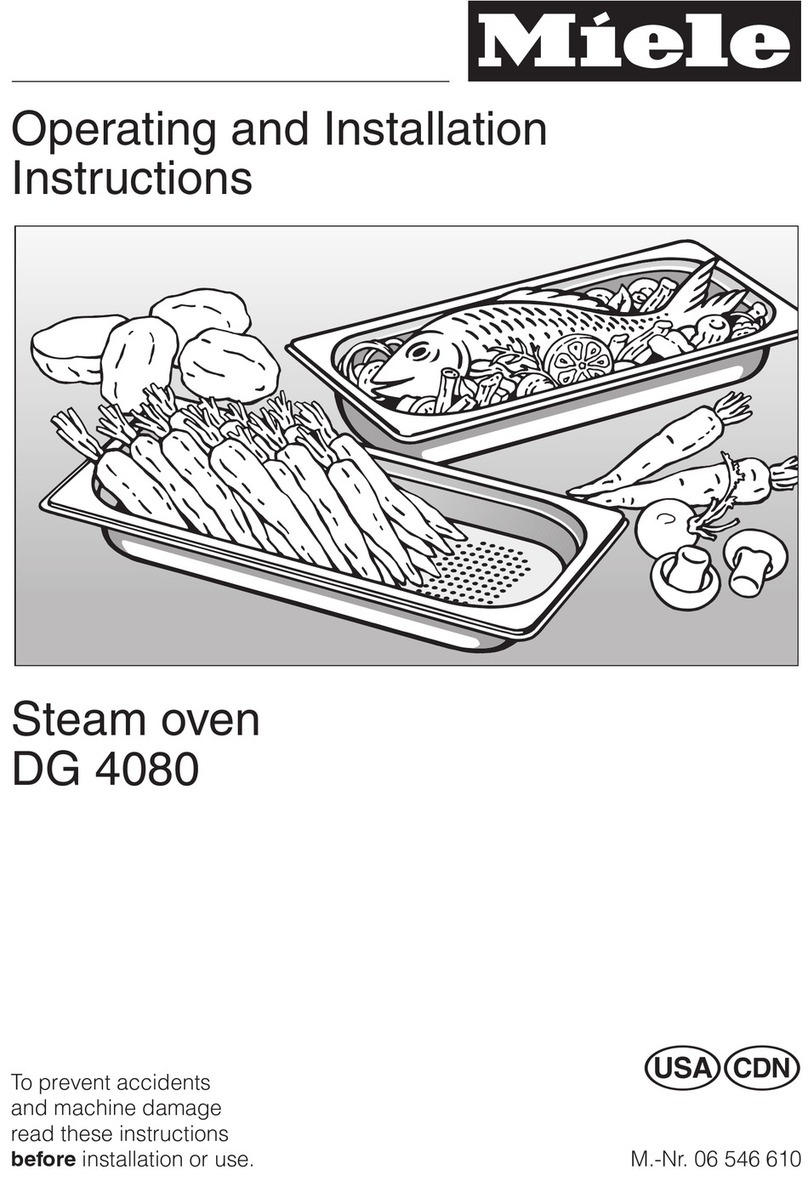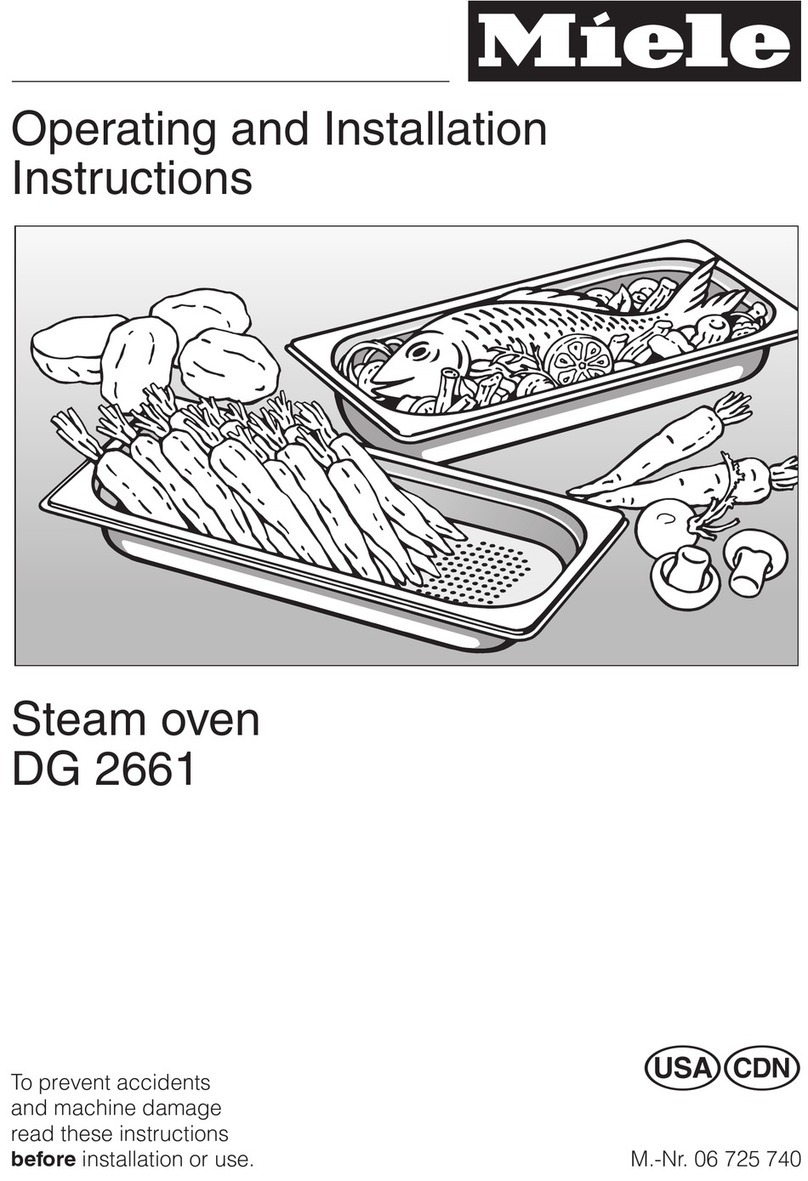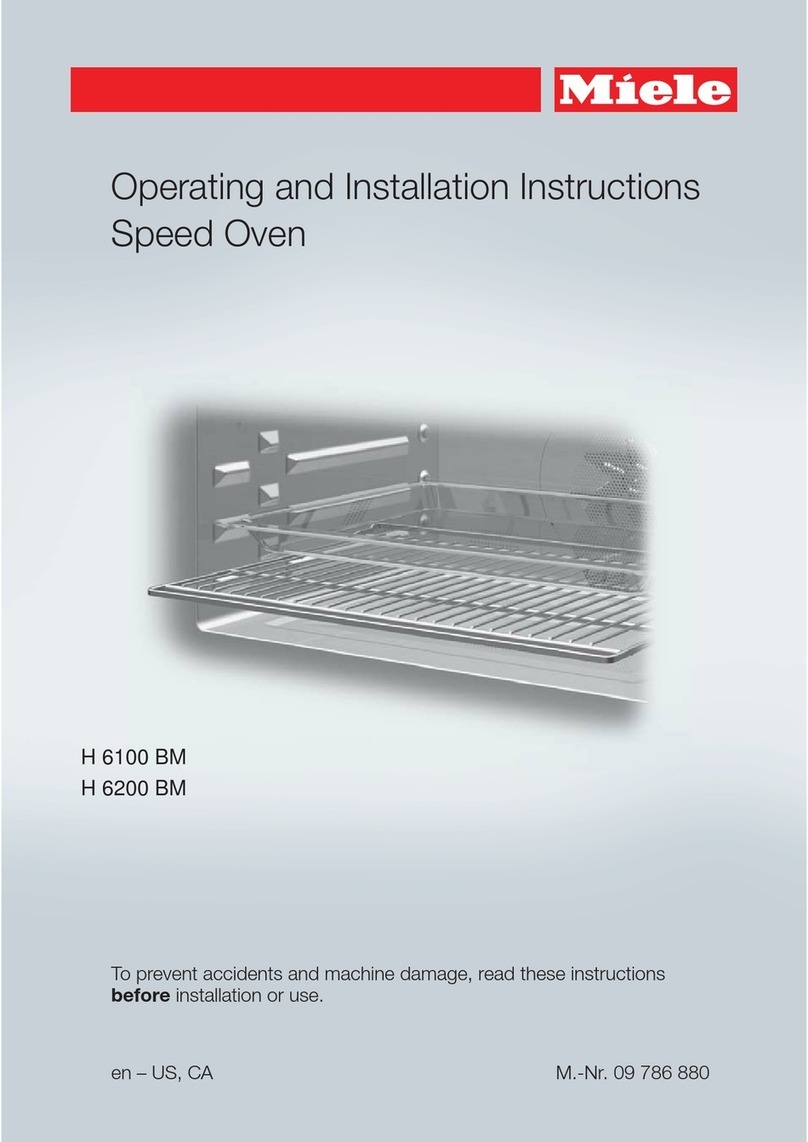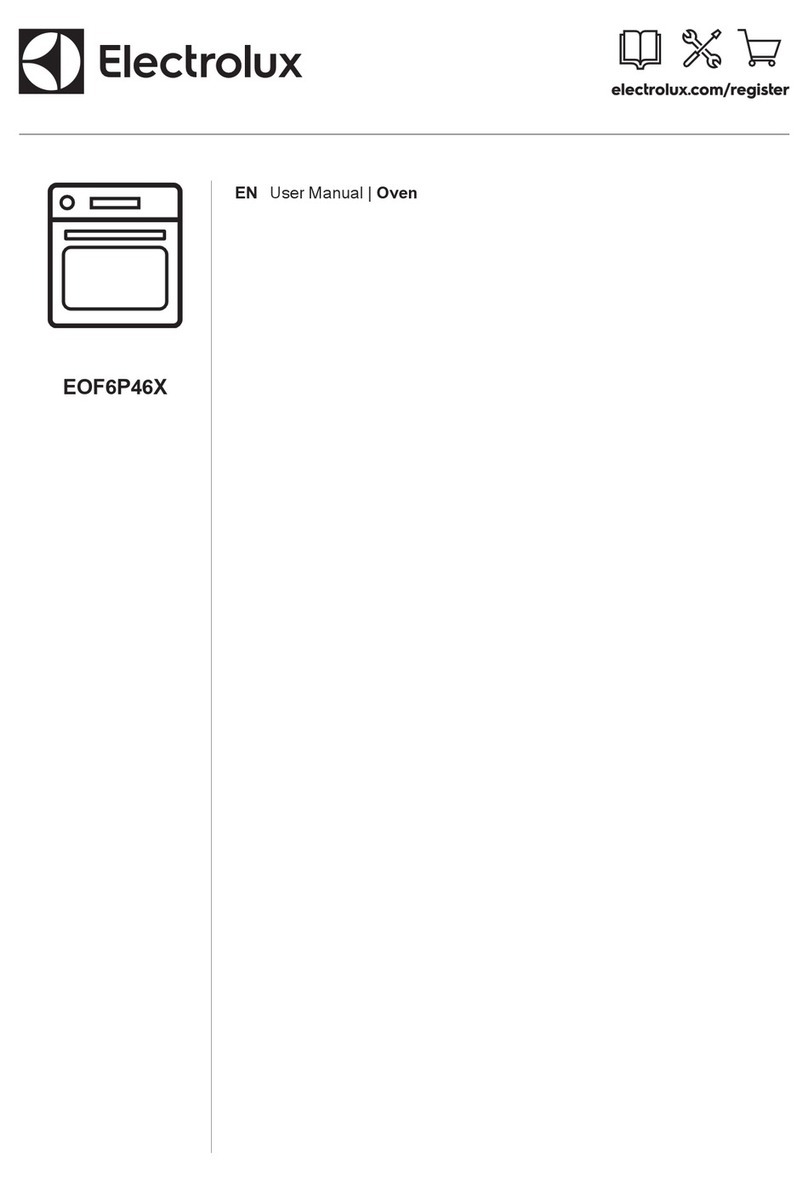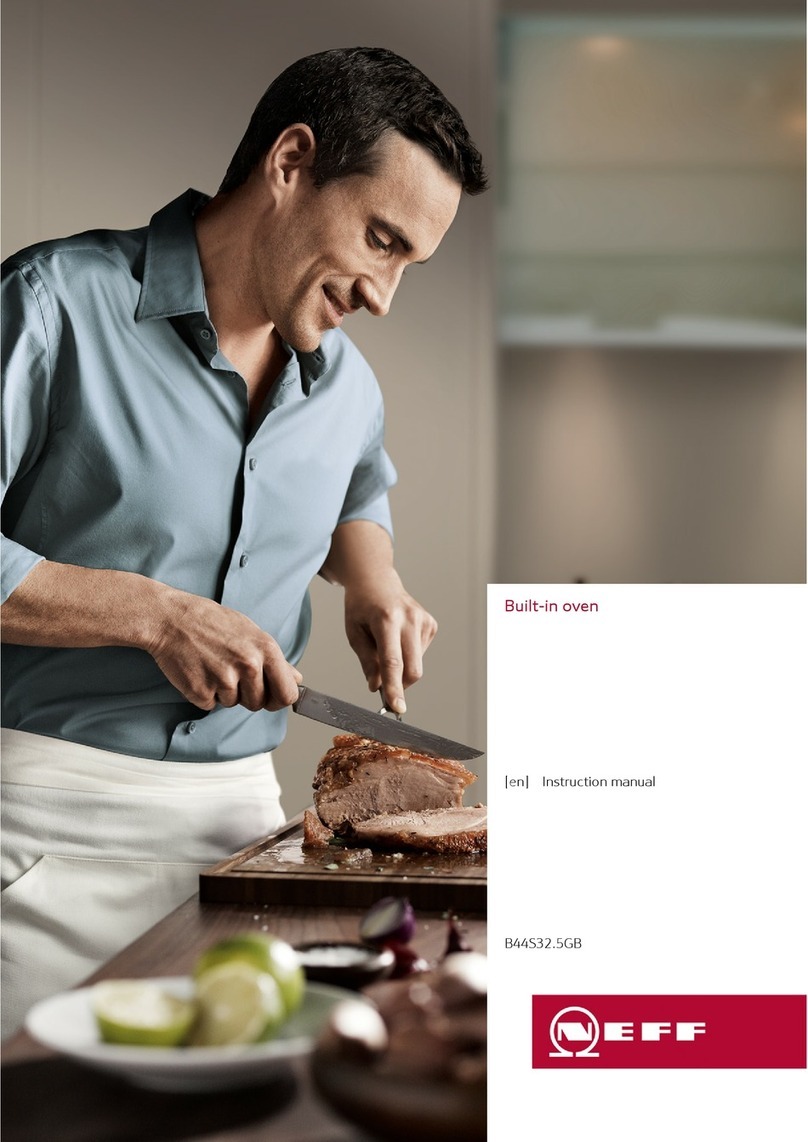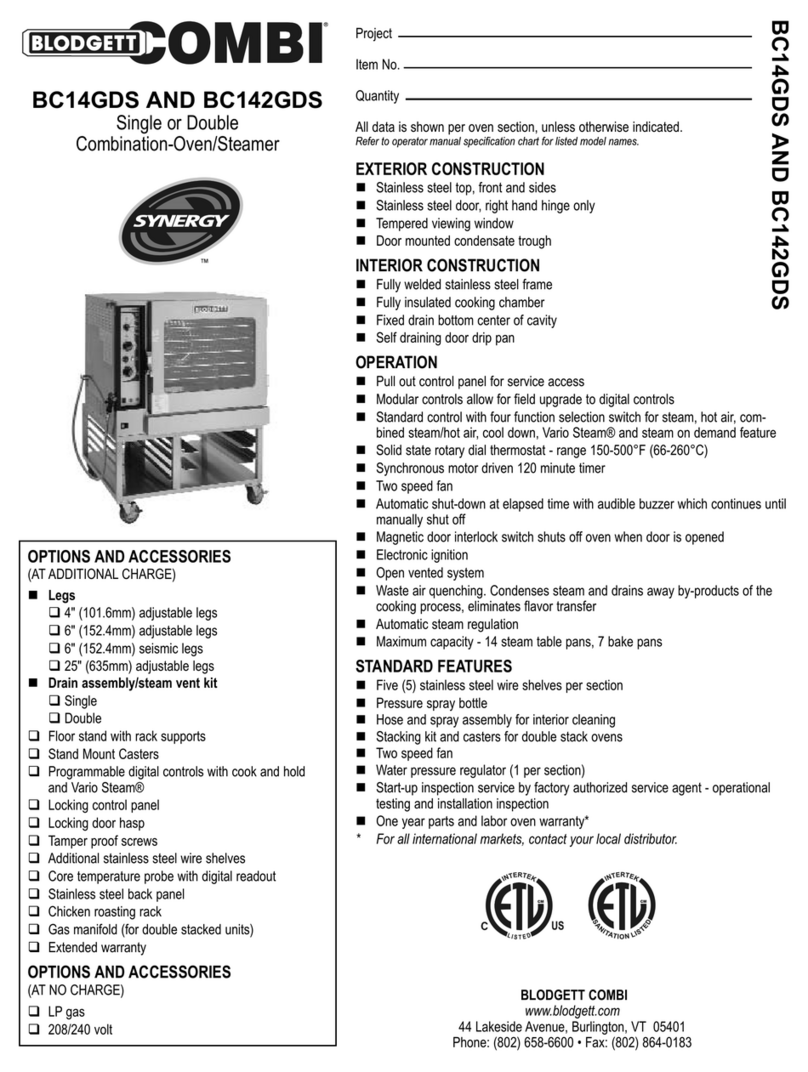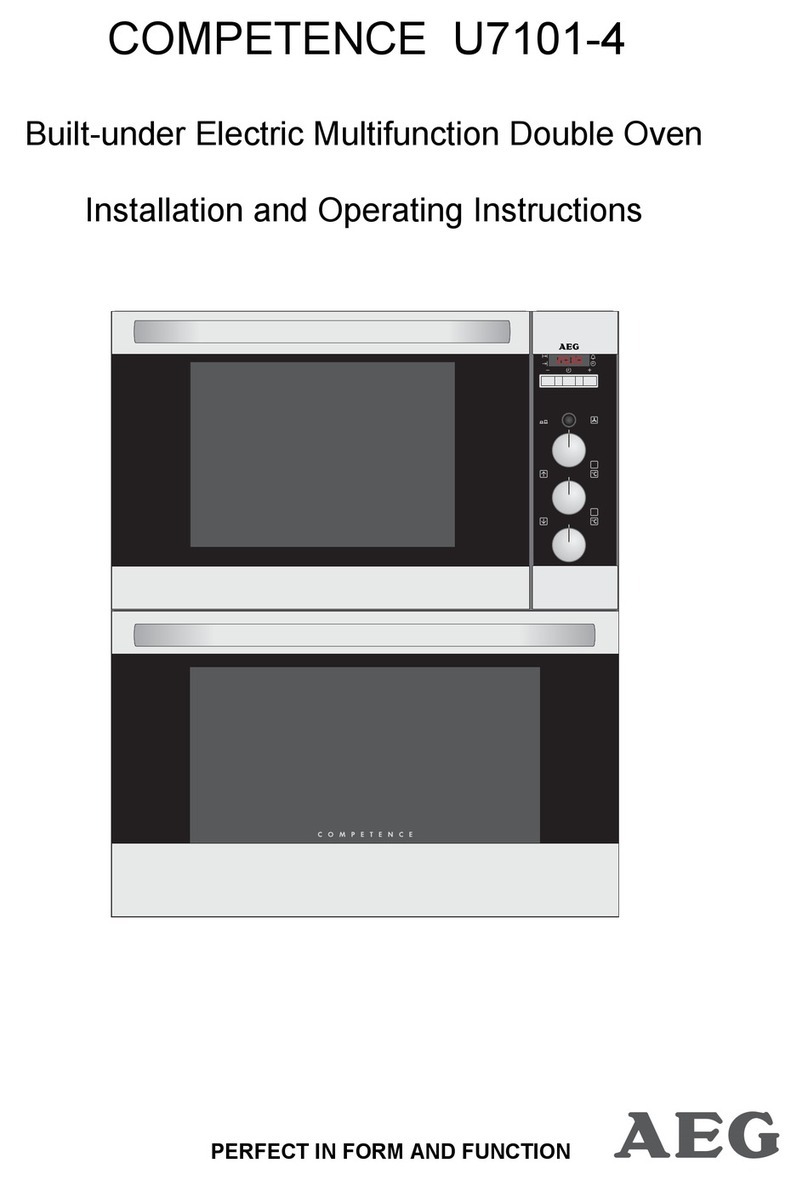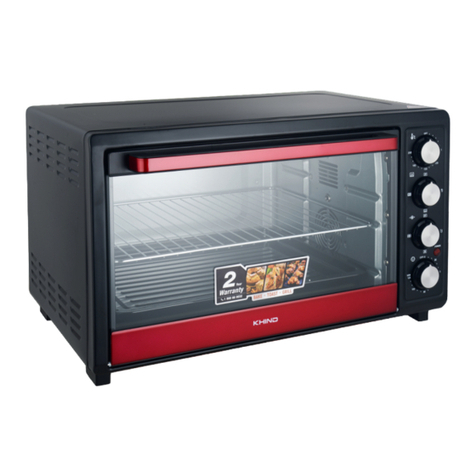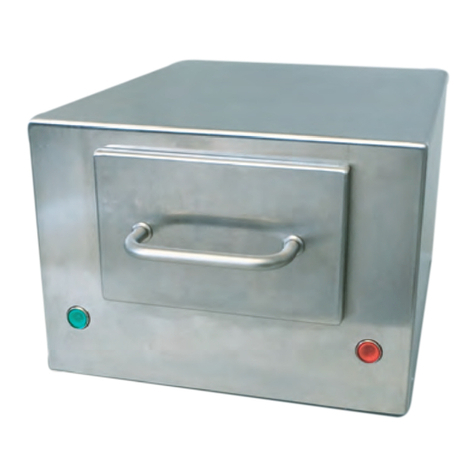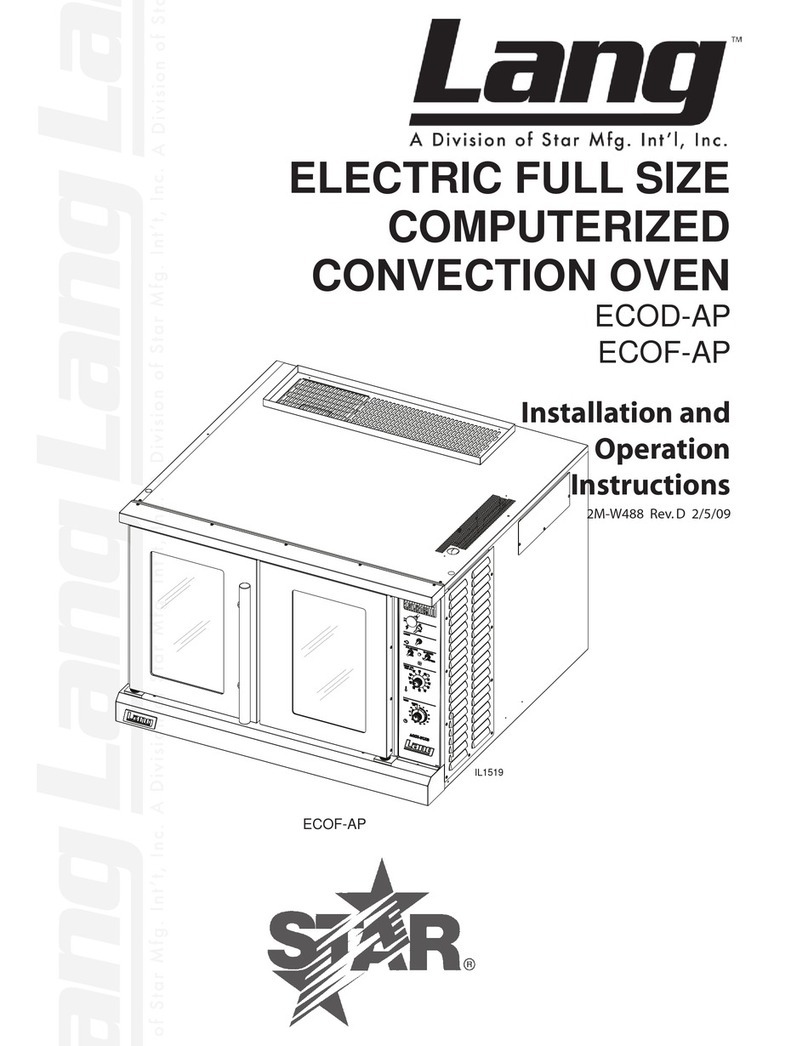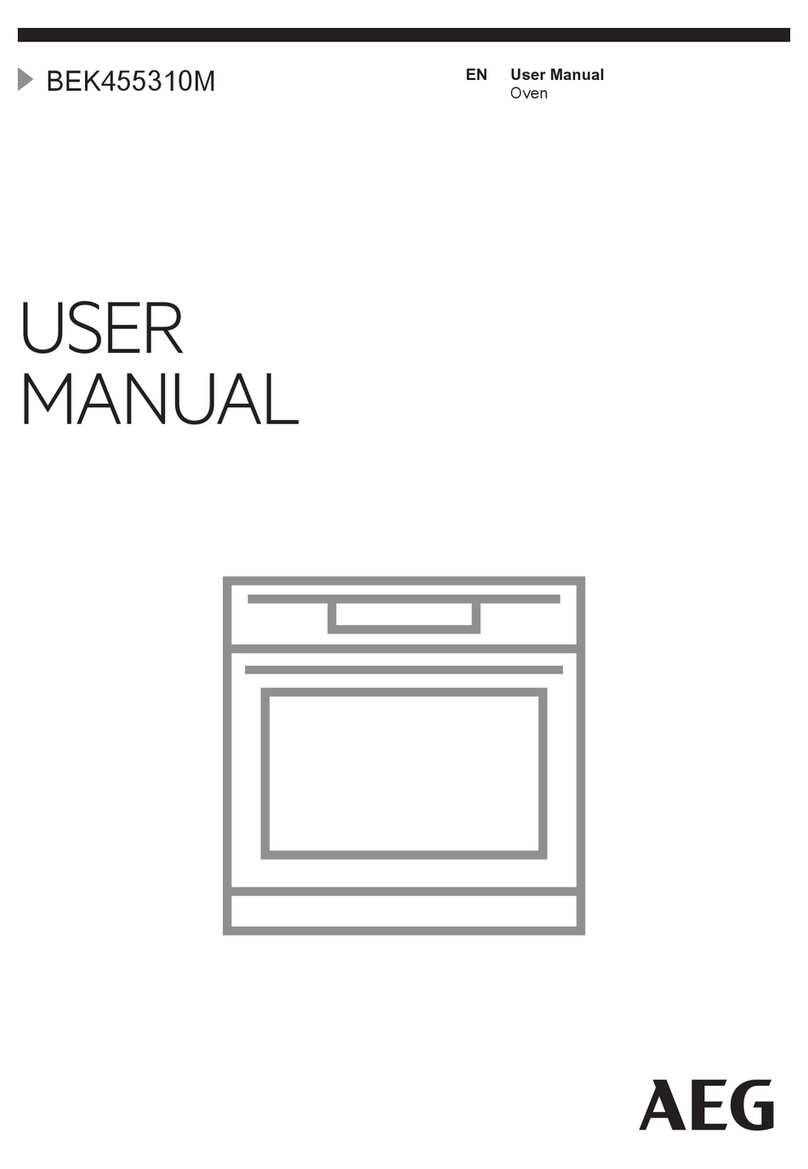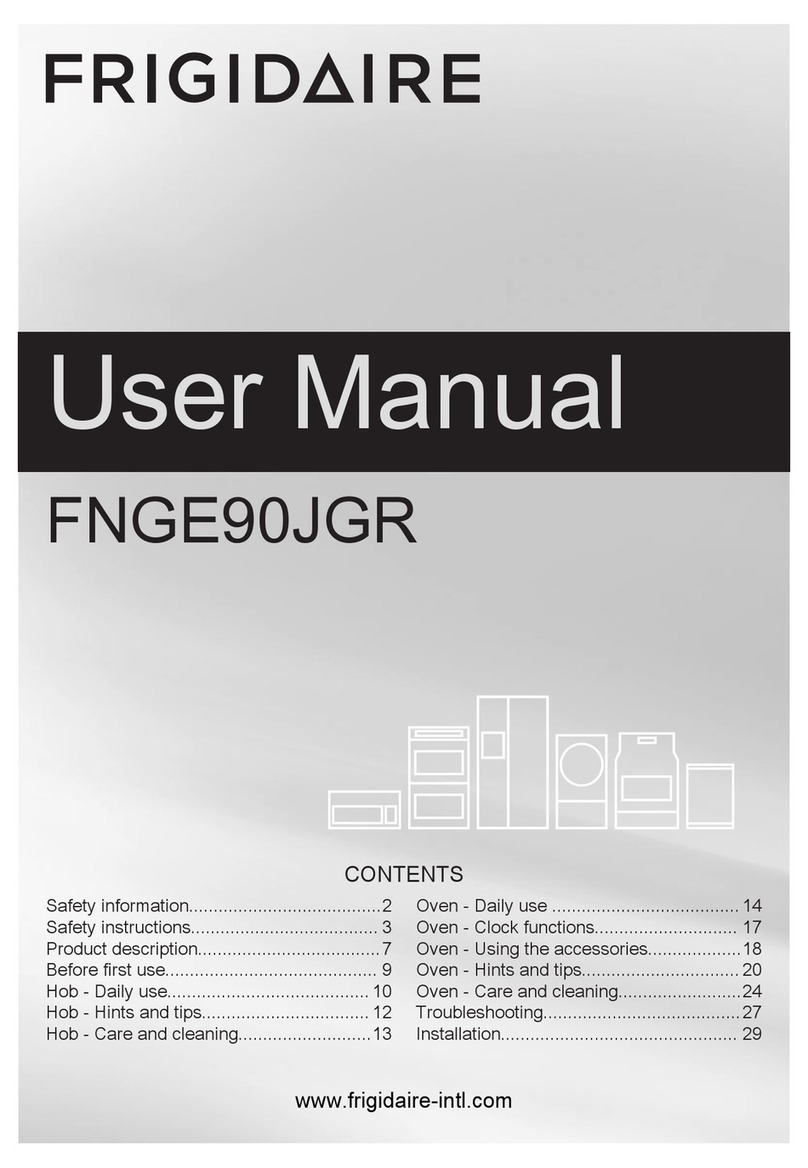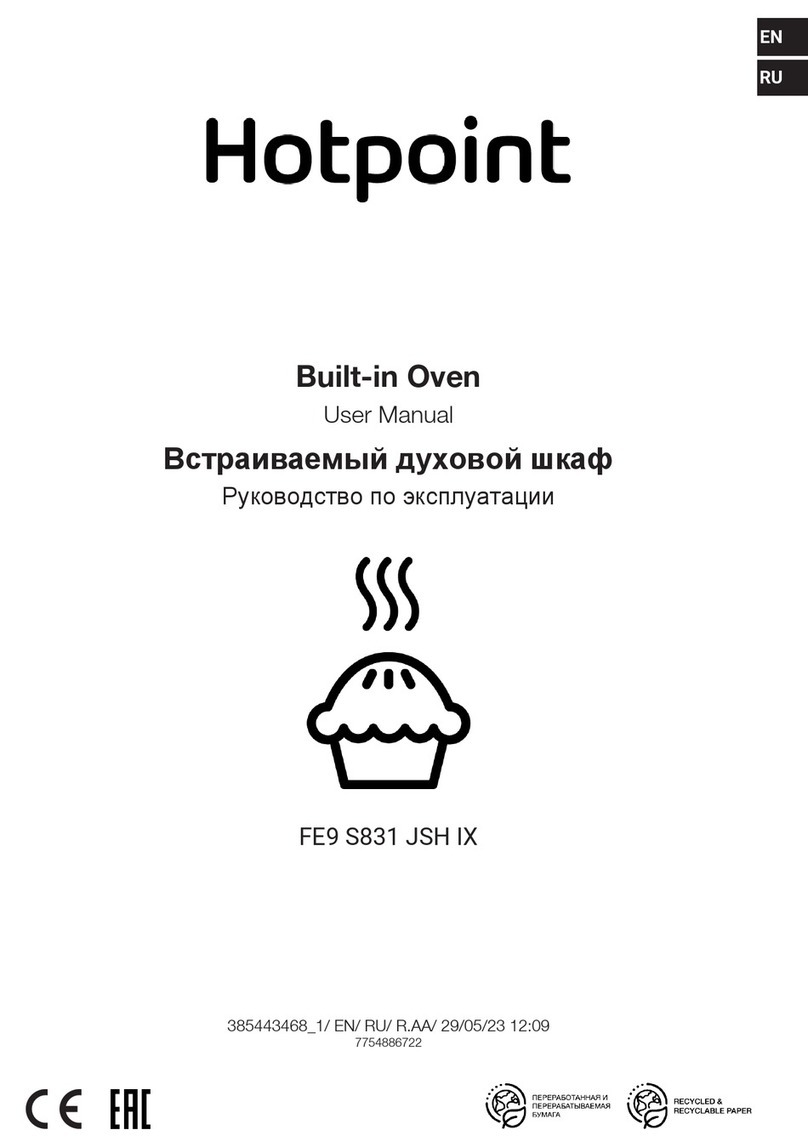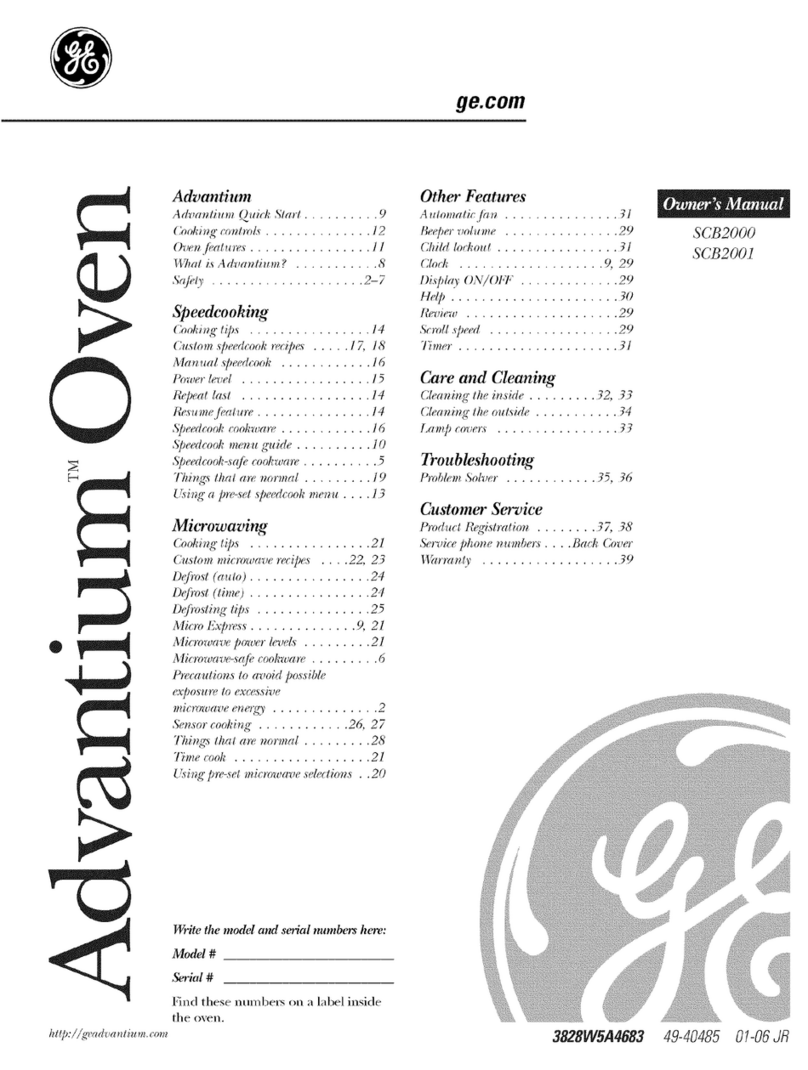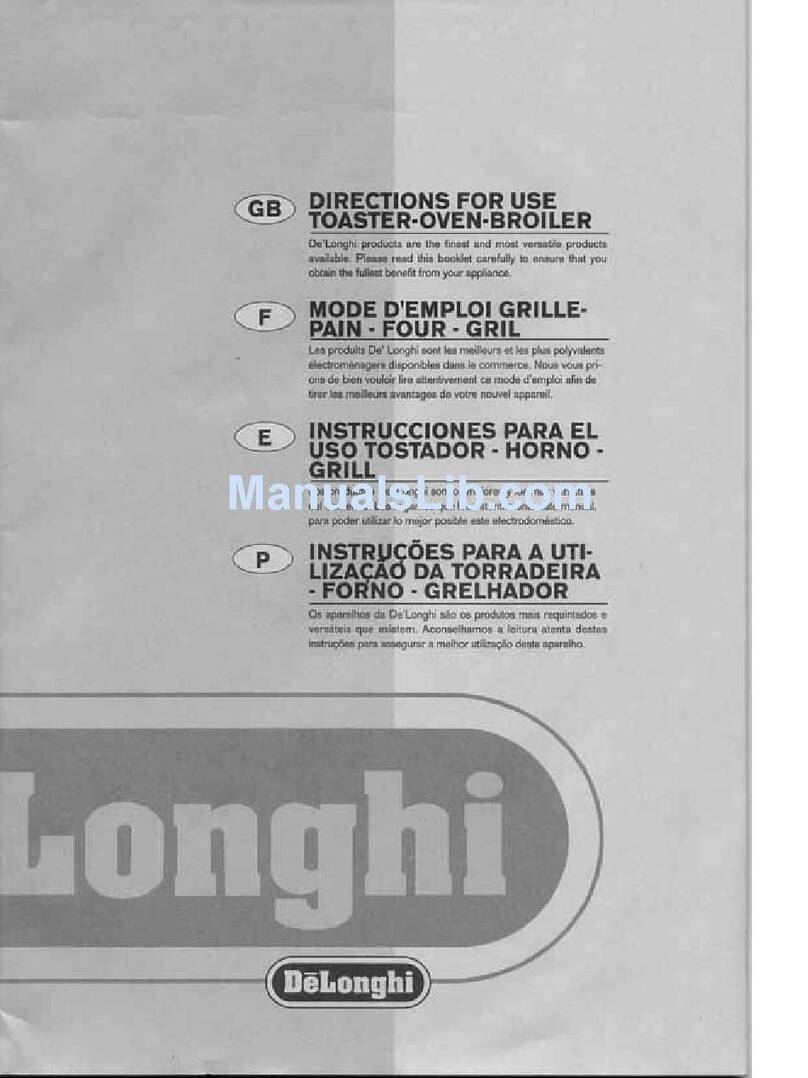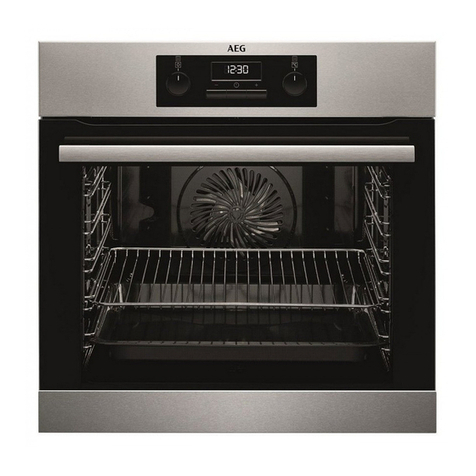Safety with children
~To safeguard against burning, keep
children well away from the appliance
at all times. This is particularly
important when the appliance is in
operation as children might attempt to
open the door.
~The appliance is only intended for
use by adults who have read these
instructions. It is not a toy! To avoid the
risk of injury, keep children well away,
and do not allow them to play with it or
use the controls. They will not
understand the potential dangers
posed by it. They should be supervised
whenever you are working in the
kitchen.
~Warning: Take care in the area
around the door hinges. Danger of
injury. Keep children well away.
~Do not allow children to swing on
the open oven door.
~Packaging, e.g. cling film,
polystyrene and plastic wrappings,
must be kept out of the reach of babies
and young children. Danger of
suffocation. Dispose of or recycle all
packaging safely as soon as possible.
~Before discarding an old appliance,
switch off and disconnect it from the
power supply. Cut off and render any
plug useless. Cut off the cable directly
behind the appliance to prevent
misuse. This should be done by a
competent person. Ensure the
appliance prevents no danger to
children while being stored for
disposal. See "Disposal of your old
appliance" for further details.
Protecting the appliance from
damage
~Do not use the appliance to heat up
food in sealed jars and tins. Pressure
will build up inside them and they can
explode causing damage to the
appliance, as well as the risk of injury
and scalding.
~Do not store cooked food in the
oven. The moisture in the food can lead
to corrosion in the appliance.
~Do not use metallic containers or
utensils in the oven which are likely to
rust. This can cause corrosion.
~Use the descaling tablets supplied
with the appliance (see "Optional
accessories" for reordering details) or a
proprietary citric acid based descaling
agent to descale the appliance. Follow
the manufacturer's instructions on the
packaging.
~Do not use a steam cleaner to clean
this appliance. The steam could reach
electrical components and cause a
short circuit. Pressurised steam could
also cause permanent damage to the
surface and to other components, for
which the manufacturer cannot accept
liability.
~The appliance is designed in such a
way that there will always be a little
residual water left in the water container
after use. If there is no residual water,
there is something wrong. Call the Ser-
vice Department.
Warning and Safety instructions
8
